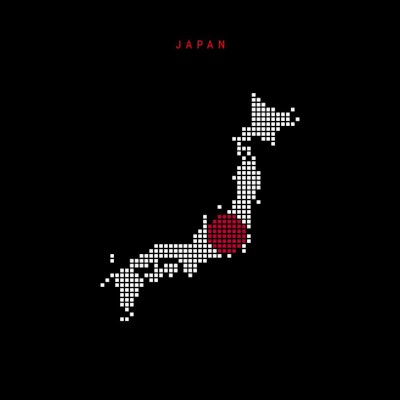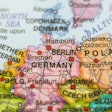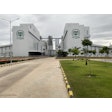
The Japanese feed industry maintains stability despite the pandemic, room for expansion and investment in new technologies
The Japanese animal feed sector is steadily growing this year amid ever-rising domestic demand and the ongoing growth of Japan’s meat and agricultural exports.
In 2021, Japanese agricultural exports exceeded the threshold of JPY1 trillion (US$8.7 billion) for the first time, while one of the major drivers of such growth became a significant increase of exports of beef to the U.S.
It is expected that the beef segment will provide the biggest impetus for growth of the Japanese animal feed market in 2022.
Japanese feed production
Japan is in the top 10 of global animal feed producers. According to a recent survey, conducted by Alltech, in 2021 the overall volume of animal feed production in the country amounted to 24.797 million tons. This is almost comparable to the pre-pandemic figures of 2019 — 25.3 million tons, however slightly lower than some initial analysts’ predictions.
In fact, Japan has began the development of its agricultural and animal feed sectors much later than most other developed countries. This was largely due to some specifics of the country’s historical development, and particularly domination of large landownership in the agrarian structure of the country, which existed until the end of World War II.
The relatively low level of efficiency of the agricultural sector in Japan has always been a source of several economic problems in the country. In particular, the government traditionally spends large sums of money to maintain domestic agriculture, as well as the animal feed producers. At the same time, due to high production costs, food and agricultural prices in the country are significantly higher than prices for imported products.
The devastating earthquake and tsunami of 2011 led to a significant drop of agricultural and animal feed production in Japan, although the industry had been able to completely recover from its consequences already by 2013.
Dependence on commodity imports
Corn has traditionally been the main component used of animal feed in Japan, with the share in the range of 45% to 48%. As Japan experiences a lack of its own production, the majority of it is imported.
While the Japanese government has tried to incentivize its production in recent years, most local farmers are still reluctant to begin its commercial growing, which is mainly due to the long cultivation period. Due to this, their particular hopes are still placed on imports, with annual volume to the country estimated at 15 to 16 million tons.
In the meantime, in addition to corn, the demand for other raw materials used in Japanese animal feed production is also growing, such as rice and soybean meal. In the latter case, the demand for soybean meal that has not been genetically modified (GM) among Japanese animal feed producers has significantly increased in recent years, which has resulted in the increase of imports. Part of such demand is met by Russia. According to some Russian media reports, Soya ANC, one of Russia’s largest soybean meal producers, based in the Far East, has recently started selling supplies to some of the Japanese leading producers of animal feed.
This has been recently confirmed by Stepan Inyutochkin, executive director of Soya ANС in an interview with the Russia’s Far East based Amurskaya Pravda business paper.
Stepan Inyutochkin says: “As part of the plans of Japan is reducing its dependence on the U.S. in its animal feed sector, as at present a significant part of animal feed and raw materials is supplied to Japan from the U.S., particularly from the Atlantic coast — through the Panama Channel and the Pacific Ocean.”
Feed outlook
Analysts expect the demand for animal feed in Japan will remain strong in years to come, with the biggest expected to be observed in the southern regions of the country, which are positioned as centers of pig production in Japan, as well as north of the country — the island of Hokkaido — a center of animal husbandry.
In the meantime, the global animal feed producers interviewed consider the Japanese market as one of the most important for their growth in the coming years.
“Firstly, we need to understand self-sufficiency ration for the feed in Japan. Numbers show very stable amount to be consumed for the domestic market, but at the same time, there is no significant growth for the market,” said Bill Kim, commercial director of Cargill, North Asia Premix & Nutrition. “Then, when we come into the situation under pandemic, the domestic demand has increased because of increasing stay-at-home demand and less meat importation from U.S. or Canada. This brought short-term positive expansion on local feed mills. Our business in Japan has been stable in 2021 and expect more growth on year 2022.”
The market is already matured and stable, Kim adds, while the pandemic had a positive trend in terms of feed production.
At the same time, almost the same position is shared by representatives of Agrifirm, who believe in good prospects of a further growth of the Japanese animal feed market.
“Overall, the pandemic did not really negatively impact the animal feed industry in Japan,” says Gert-Jan Gerrits, general manager, Agrifirm Asia Pacific. “The secondary side effects of the pandemic, such as disrupted supply chains, closed slaughterhouses, volatile prices for meat and animal products, high commodity prices, energy crises, and so on, may have some negative influences on the Japanese feed industry. On the other hand, the animal feed market in Japan has been stable for years, with a good prospect of slight growth in the coming years. Meat consumption per capita in Japan is still increasing slightly. The compound feed market in Japan remains competitive and fragmented with many feed mills and will grow slightly this year.”
Analysts also expect new animal feed facilities will be commissioned in Japan this year, which is reflected by the current stable demand for the industry’s equipment and plants.
“The current demand for equipment, plants and services in the Japanese animal feed market remains stable. However, we have not seen large investments in additional capacities over the last years since the market is saturated,” says Stefan Hoh, head of market segment — feed milling & premix, Bühler Group.
According to Hoh, particular hopes of the company are put on the further expansion of its activities in the field of digital solutions.
“In this case, we see great potential in a market like Japan with a large installed basis,” Hoh says.
















